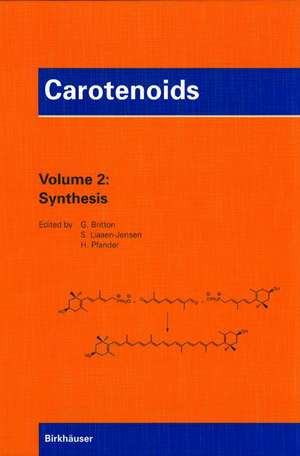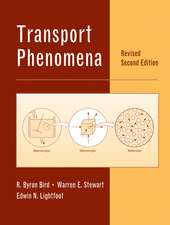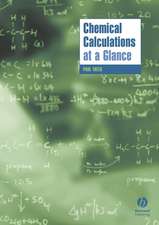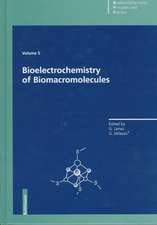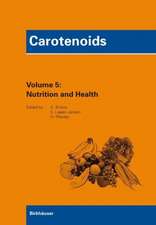Carotenoids: Volume 2: Synthesis: Carotenoids, cartea 2
Editat de Hanspeter Pfander, George Britton, Synnove Liaaen-Jensenen Limba Engleză Hardback – mai 1996
| Toate formatele și edițiile | Preț | Express |
|---|---|---|
| Paperback (2) | 1223.43 lei 6-8 săpt. | |
| Birkhäuser Basel – noi 2011 | 1223.43 lei 6-8 săpt. | |
| Birkhäuser Basel – 14 oct 2012 | 1237.17 lei 6-8 săpt. | |
| Hardback (2) | 1227.04 lei 6-8 săpt. | |
| Birkhäuser Basel – mai 1996 | 1227.04 lei 6-8 săpt. | |
| Birkhäuser Basel – 12 ian 2004 | 1248.90 lei 6-8 săpt. |
Preț: 1227.04 lei
Preț vechi: 1496.40 lei
-18% Nou
Puncte Express: 1841
Preț estimativ în valută:
234.78€ • 245.16$ • 193.88£
234.78€ • 245.16$ • 193.88£
Carte tipărită la comandă
Livrare economică 15-29 aprilie
Preluare comenzi: 021 569.72.76
Specificații
ISBN-13: 9783764352974
ISBN-10: 3764352973
Pagini: 380
Ilustrații: XIX, 362 p.
Dimensiuni: 155 x 235 x 23 mm
Greutate: 0.71 kg
Ediția:1996
Editura: Birkhäuser Basel
Colecția Birkhäuser
Seria Carotenoids
Locul publicării:Basel, Switzerland
ISBN-10: 3764352973
Pagini: 380
Ilustrații: XIX, 362 p.
Dimensiuni: 155 x 235 x 23 mm
Greutate: 0.71 kg
Ediția:1996
Editura: Birkhäuser Basel
Colecția Birkhäuser
Seria Carotenoids
Locul publicării:Basel, Switzerland
Public țintă
ResearchCuprins
1: General Aspects.- I: Synthesis in Perspective.- II: Strategies for Building the Carbon Skeleton.- III: Characterization of Products.- 2: Coupling Reactions.- I: Enol Ether and Aldol Condensations.- II: Organometallic Reactions.- III: Wittig Olefination.- IV: Sulphone Coupling.- 3: Carotenoid Synthesis.- I: Polyene Synthons.- II: Acyclic Carotenoids.- III: Synthesis of Cyclic Carotenoids.- IV: Synthesis of Acetylenic, Allenic and In-chain Substituted Carotenoids.- V: Total Synthesis of (Z)-Isomers.- VI: Labelled Carotenoids.- VII: Technical Syntheses.- VIII: Partial Synthesis of Glycosides and Glycosyl Esters.- IX: Partial Synthesis of Sulphates.- Worked Examples.- Example 1: Enol Ether Condensation.- Example 2: Organometallic Reactions.- Example 3: Wittig and Horner-Emmons Reaction.- Example 4: Sulphone Coupling.- Example 5: Asymmetric Syntheses.- Example 6: Synthesis ex Chiral Pool.- Example 7: Optical Resolution of Racemic ?-Ionone.- Example 8: ?,?-Carotene.- Appendix I: List of Synthons.- Appendix II: List of Naturally Occurring Carotenoids Prepared by Total Synthesis.- List of abbreviations.
Recenzii
If you work with a lot of carotenoids, or simply need a good reference book containing fundamental data to help with laboratory work involving the isolation, quantitaion, or identification of carotenoids this is a tremendous reference. (Plant Science Bulletin)
Textul de pe ultima copertă
With the number of natural carotenoid structures reported rising above 700, there is a clear need for a single reference work containing data on all these compounds. A previous work, the Key to Carotenoids (1987, 2nd edition, Birkhäuser Publishing), listed complete literature references to 563 carotenoids obtained from natural sources up to 1982; this list was extended in an appendix to Carotenoids Vol. 1A. The forthcoming Handbook expands this coverage to include all natural carotenoids and common isolation artefacts for which structures have been assigned up to the end of 2001. For each compound, it provides selected key references and critically assessed information about natural occurrence and isolation, and spectroscopic data for identification.
Though the Handbook serves as a unique comprehensive reference book on the known carotenoids, it is designed to be used in conjunction with the Carotenoids series. The numbering of carotenoids in the Handbook is the same as that used throughout the Carotenoids volumes. The factual information and practical guidance given in this well received book series ideally complements the informations given in the Handbook. It is highly advisable to be familiar with the general methods and precautions for handling carotenoids, and with the isolation and purification strategies and methods as described and evaluated in Vol. 1A, and the principles, application and interpretation of the spectroscopic techniques as described in Vol. 1B, to ensure that the identifications and analyses on which carotenoid work is based are accurate and reliable.
The Handbook of Carotenoids is an important source of information for both specialists and non-specialists. It will be of great value not only to chemists and biochemists, but to all researchers whose work and interests bring them into the diverse field of carotenoids, especially those from areas of biology, food science, nutrition, medicine, horticulture,agriculture, aquaculture, ecology, and biotechnology.
Though the Handbook serves as a unique comprehensive reference book on the known carotenoids, it is designed to be used in conjunction with the Carotenoids series. The numbering of carotenoids in the Handbook is the same as that used throughout the Carotenoids volumes. The factual information and practical guidance given in this well received book series ideally complements the informations given in the Handbook. It is highly advisable to be familiar with the general methods and precautions for handling carotenoids, and with the isolation and purification strategies and methods as described and evaluated in Vol. 1A, and the principles, application and interpretation of the spectroscopic techniques as described in Vol. 1B, to ensure that the identifications and analyses on which carotenoid work is based are accurate and reliable.
The Handbook of Carotenoids is an important source of information for both specialists and non-specialists. It will be of great value not only to chemists and biochemists, but to all researchers whose work and interests bring them into the diverse field of carotenoids, especially those from areas of biology, food science, nutrition, medicine, horticulture,agriculture, aquaculture, ecology, and biotechnology.
Caracteristici
Includes all natural carotenoids and common isolation artefacts up to the end of 2001 For each compound, selected key references and critically assessed information about natural occurrence and isolation, and spectroscopic data for identification are provided Unique comprehensive reference book on the known carotenoids To be used in conjunction with the Carotenoids book series Selected key references
